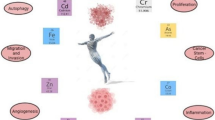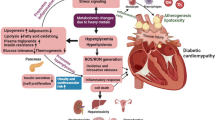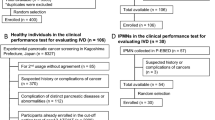Abstract
Oxylipins are signal lipid molecules formed from polyunsaturated fatty acids (PUFAs) in several multienzymatic metabolic pathways, such as cyclooxygenase (COX), lipoxygenase (LOX), epoxygenase (CYP), and anandamide pathways, as well as non-enzymatically. The pathways of PUFA transformation are activated in parallel, yielding a mixture of physiologically active substances. Although the association of oxylipins with carcinogenesis had been established a long time ago, only recently analytical methods have advanced to a degree allowing detection and quantification of oxylipins from different classes (oxylipin profiles). The review describes current approaches to the HPLC-MS/MS analysis of oxylipin profiles and compares oxylipin profiles from patients with oncological diseases (breast cancer, colorectal cancer, ovarian cancer, lung cancer, prostate cancer, liver cancer). The possibility of using blood oxylipin profiles as biomarkers in oncological diseases is discussed. Understanding the patterns of PUFA metabolism and physiological activity of combinations of oxylipins will improve early diagnostics of oncological diseases and evaluation of disease prognosis.


Similar content being viewed by others
Abbreviations
- COX:
-
cyclooxygenase
- CYP:
-
cytochrome P450
- DHA:
-
docosahexaenoic acid
- EPA:
-
eicosapentaenoic acid
- LA:
-
linoleic acid
- LOX:
-
lipoxygenase
References
Sergeeva, M. G., and Varfolomeeva, A. T. (2006) Arachidonic Acid Cascade, Public education, Moscow, Russia.
Gabbs, M., Leng, S., Devassy, J. G., Monirujjaman, M., and Aukema, H. M. (2015) Advances in our understanding of oxylipins derived from dietary PUFAs, Adv. Nutr., 6, 513-540, https://doi.org/10.3945/an.114.007732.
Hajeyah, A. A., Griffiths, W. J., Wang, Y., Finch, A. J., and O’Donnell, V. B. (2020) The biosynthesis of enzymatically oxidized lipids, Front. Endocrinol., 11, 591819, https://doi.org/10.3389/FENDO.2020.591819.
Genrikhs, E. E., Bobrov, M. Y., Andrianova, E. L., Gretskaya, N. M., Lyzhin, A. A., Blazhenova, A. V., et al. (2010) Modulators of endogenous cannabinoid system as neuroprotectors, Ann. Clin. Exp. Neurol., 4, 37-42, https://doi.org/10.17816/psaic323.
Buczynski, M. W., Dumlao, D. S., and Dennis, E. A. (2009) An integrated omics analysis of eicosanoid biology, J. Lipid Res., 50, 1015-1038, https://doi.org/10.1194/jlr.R900004-JLR200.
Johnson, A. M., Kleczko, E. K., and Nemenoff, R. A. (2020) Eicosanoids in cancer: new roles in immunoregulation, Front. Pharmacol., 11, 595498, https://doi.org/10.3389/FPHAR.2020.595498.
Dennis, E. A., and Norris, P. C. (2015) Eicosanoid storm in infection and inflammation, Nat. Rev. Immunol., 15, 511-523, https://doi.org/10.1038/nri3859.
Serhan, C. N. (2014) Pro-resolving lipid mediators are leads for resolution physiology, Nature, 510, 92-101, https://doi.org/10.1038/nature13479.
Furman, D., Campisi, J., Verdin, E., Carrera-Bastos, P., Targ, S., Franceschi, C., et al. (2019) Chronic inflammation in the etiology of disease across the life span, Nat. Med., 25, 1822-1832, https://doi.org/10.1038/S41591-019-0675-0.
Medzhitov, R. (2021) The spectrum of inflammatory responses, Science, 374, 1070-1075, https://doi.org/10.1126/SCIENCE.ABI5200.
Medzhitov, R. (2008) Origin and physiological roles of inflammation, Nature, 454, 428-435, https://doi.org/10.1038/nature07201.
Van Praet, L., Jacques, P., Van den Bosch, F., and Elewaut, D. (2012) The transition of acute to chronic bowel inflammation in spondyloarthritis, Nat. Rev. Rheumatol., 8, 288-295, https://doi.org/10.1038/nrrheum.2012.42.
Hanahan, D., and Weinberg, R. A. (2011) Hallmarks of cancer: the next generation, Cell, 144, 646-674, https://doi.org/10.1016/J.CELL.2011.02.013.
Coussens, L. M., and Werb, Z. (2002) Inflammation and cancer, Nature, 420, 860-867, https://doi.org/10.1038/NATURE01322.
Akimov, M. G., Bobrov, M. U., Bezuglov, V. V., and Konovalov, S. S. (2009) Lipids and Cancer: Essays on Lipidology Oncological Process, Prime-Evroznak, Russia.
Schebb, N. H., Kühn, H., Kahnt, A. S., Rund, K. M., O’Donnell, V. B., Flamand, N., et al. (2022) Formation, signaling and occurrence of specialized pro-resolving lipid mediators-what is the evidence so far? Front. Pharmacol., 13, 838782, https://doi.org/10.3389/FPHAR.2022.838782.
Burla, B., Arita, M., Arita, M., Bendt, A. K., Cazenave-Gassiot, A., Dennis, E. A., et al. (2018) MS-based lipidomics of human blood plasma: a community-initiated position paper to develop accepted guidelines, J. Lipid Res., 59, 2001-2017, https://doi.org/10.1194/jlr.S087163.
Morris, J. K., Piccolo, B. D., John, C. S., Green, Z. D., Thyfault, J. P., and Adams, S. H. (2019) Oxylipin profiling of Alzheimer’s disease in nondiabetic and type 2 diabetic elderly, Metabolites, 9, 177, https://doi.org/10.3390/metabo9090177.
Gao, B., Lang, S., Duan, Y., Wang, Y., Shawcross, D. L., Louvet, A., et al. (2019) Serum and fecal oxylipins in patients with alcohol-related liver disease, Digest. Dis. Sci., 64, 1878-1892, https://doi.org/10.1007/s10620-019-05638-y.
Quehenberger, O., Armando, A. M., Brown, A. H., Milne, S. B., Myers, D. S., Merrill, A. H., et al. (2010) Lipidomics reveals a remarkable diversity of lipids in human plasma, J. Lipid Res., 51, 3299-3305, https://doi.org/10.1194/JLR.M009449.
Huynh, K., Barlow, C. K., Jayawardana, K. S., Weir, J. M., Mellett, N. A., Cinel, M., et al. (2019) High-throughput plasma lipidomics: detailed mapping of the associations with cardiometabolic risk factors, Cell Chem. Biol., 26, 71-84.e4, https://doi.org/10.1016/J.CHEMBIOL.2018.10.008.
Lam, S. M., Tian, H., and Shui, G. (2017) Lipidomics, en route to accurate quantitation, Biochim. Biophys. Acta Mol. Cell Biol. Lipids, 1862, 752-761, https://doi.org/10.1016/J.BBALIP.2017.02.008.
Bowden, J. A., Heckert, A., Ulmer, C. Z., Jones, C. M., Koelmel, J. P., Abdullah, L., et al. (2017) Harmonizing lipidomics: NIST interlaboratory comparison exercise for lipidomics using SRM 1950-metabolites in frozen human plasma, J. Lipid Res., 58, 2275-2288, https://doi.org/10.1194/JLR.M079012.
Mainka, M., Dalle, C., Pétéra, M., Dalloux-Chioccioli, J., Kampschulte, N., Ostermann, A. I., et al. (2020) Harmonized procedures lead to comparable quantification of total oxylipins across laboratories, J. Lipid Res., 61, 1424-1436, https://doi.org/10.1194/jlr.RA120000991.
Koch, E., Mainka, M., Dalle, C., Ostermann, A. I., Rund, K. M., Kutzner, L., et al. (2020) Stability of oxylipins during plasma generation and long-term storage, Talanta, 217, 121074, https://doi.org/10.1016/j.talanta.2020.121074.
Liakh, I., Pakiet, A., Sledzinski, T., and Mika, A. (2020) Methods of the analysis of oxylipins in biological samples, Molecules, 25, 349, https://doi.org/10.3390/molecules25020349.
Frezza, C. (2020) Metabolism and cancer: the future is now, Br. J. Cancer, 122, 133-135, https://doi.org/10.1038/s41416-019-0667-3.
Koundouros, N., and Poulogiannis, G. (2020) Reprogramming of fatty acid metabolism in cancer, Br. J. Cancer, 122, 4-22, https://doi.org/10.1038/S41416-019-0650-Z.
Butler, L. M., Perone, Y., Dehairs, J., Lupien, L. E., de Laat, V., Talebi, A., et al. (2020) Lipids and cancer: emerging roles in pathogenesis, diagnosis and therapeutic intervention, Adv. Drug Deliv. Rev., 159, 245-293, https://doi.org/10.1016/j.addr.2020.07.013.
Pakiet, A., Kobiela, J., Stepnowski, P., Sledzinski, T., and Mika, A. (2019) Changes in lipids composition and metabolism in colorectal cancer: a review, Lipids Health Dis., 18, 29, https://doi.org/10.1186/S12944-019-0977-8.
Wang, D., and DuBois, R. N. (2018) Role of prostanoids in gastrointestinal cancer, J. Clin. Invest., 128, 2732-2742, https://doi.org/10.1172/JCI97953.
Patrignani, P., Sacco, A., Sostres, C., Bruno, A., Dovizio, M., Piazuelo, E., et al. (2017) Low-dose aspirin acetylates cyclooxygenase-1 in human colorectal mucosa: implications for the chemoprevention of colorectal cancer, Clin. Pharmacol. Ther., 102, 52-61, https://doi.org/10.1002/CPT.639.
Edin, M. L., Duval, C., Zhang, G., and Zeldin, D. C. (2020) Role of linoleic acid-derived oxylipins in cancer, Cancer Metastasis Rev., 39, 581-582, https://doi.org/10.1007/s10555-020-09904-8.
Azrad, M., Turgeon, C., and Demark-Wahnefried, W. (2013) Current evidence linking polyunsaturated fatty acids with cancer risk and progression, Front. Oncol., 3, 224, https://doi.org/10.3389/FONC.2013.00224.
Markosyan, N., Chen, E. P., and Smyth, E. M. (2014) Targeting COX-2 abrogates mammary tumorigenesis: breaking cancer-associated suppression of immunosurveillance, Oncoimmunology, 3, e29287, https://doi.org/10.4161/ONCI.29287.
Schneider, C., and Pozzi, A. (2011) Cyclooxygenases and lipoxygenases in cancer, Cancer Metastasis Rev., 30, 277-294, https://doi.org/10.1007/S10555-011-9310-3.
Catalano, A., and Procopio, A. (2005) New aspects on the role of lipoxygenases in cancer progression, Histol. Histopathol., 20, 969-975, https://doi.org/10.14670/HH-20.969.
Wang, Q., Morris, R. J., Bode, A. M., and Zhang, T. (2022) Prostaglandin pathways: opportunities for cancer prevention and therapy, Cancer Res., 82, 949-965, https://doi.org/10.1158/0008-5472.CAN-21-2297.
Luo, Y., and Liu, J. Y. (2020) Pleiotropic functions of cytochrome p450 monooxygenase-derived eicosanoids in cancer, Front. Pharmacol., 11, 580897, https://doi.org/10.3389/FPHAR.2020.580897.
Mahapatra, A. D., Choubey, R., and Datta, B. (2020) Small molecule soluble epoxide hydrolase inhibitors in multitarget and combination therapies for inflammation and cancer, Molecules, 25, 5488, https://doi.org/10.3390/MOLECULES25235488.
Bruno, R. D., and Njar, V. C. O. (2007) Targeting cytochrome P450 enzymes: a new approach in anti-cancer drug development, Bioorg. Med. Chem., 15, 5047-5060, https://doi.org/10.1016/J.BMC.2007.05.046.
Laezza, C., Pagano, C., Navarra, G., Pastorino, O., Proto, M. C., Fiore, D., et al. (2020) The endocannabinoid system: a target for cancer treatment, Int. J. Mol. Sci., 21, 747, https://doi.org/10.3390/IJMS21030747.
Chocholoušková, M., Jirásko, R., Vrána, D., Gatěk, J., Melichar, B., and Holčapek, M. (2019) Reversed phase UHPLC/ESI-MS determination of oxylipins in human plasma: a case study of female breast cancer, Anal. Bioanal. Chem., 411, 1239-1251, https://doi.org/10.1007/s00216-018-1556-y.
Chistyakov, D. V., Guryleva, M. V., Stepanova, E. S., Makarenkova, L. M., Ptitsyna, E. V., Goriainov, S. V., et al. (2022) Multi-omics approach points to the importance of oxylipins metabolism in early-stage breast cancer, Cancers, 14, 2041, https://doi.org/10.3390/cancers14082041.
Zheng, J., Zheng, Y., Li, W., Zhi, J., Huang, X., Zhu, W., et al. (2022) Combined metabolomics with transcriptomics reveals potential plasma biomarkers correlated with non-small-cell lung cancer proliferation through the Akt pathway, Clin. Chim. Acta, 530, 66-73, https://doi.org/10.1016/J.CCA.2022.02.018.
Zhang, J., Yang, Q., Li, J., Zhong, Y., Zhang, L., Huang, Q., et al. (2017) Distinct differences in serum eicosanoids in healthy, enteritis and colorectal cancer individuals, Metabolomics, 14, 4, https://doi.org/10.1007/S11306-017-1293-9.
Guo, J., Pan, Y., Chen, J., Jin, P., Tang, S., Wang, H., et al. (2023) Serum metabolite signatures in normal individuals and patients with colorectal adenoma or colorectal cancer using UPLC-MS/MS method, J. Proteomics, 270, 104741, https://doi.org/10.1016/J.JPROT.2022.104741.
Zhang, L.-Jian, Chen, B., Zhang, J.-Jie, Li, J., Yang, Q., Zhong, Q.-Sheng, et al. (2017) Serum polyunsaturated fatty acid metabolites as useful tool for screening potential biomarker of colorectal cancer, Prostaglandins Leukot. Essent. Fatty Acids, 120, 25-31, https://doi.org/10.1016/J.PLEFA.2017.04.003.
Liu, J., Mazzone, P. J., Cata, J. P., Kurz, A., Bauer, M., Mascha, E. J., et al. (2014) Serum free fatty acid biomarkers of lung cancer, Chest, 146, 670-679, https://doi.org/10.1378/CHEST.13-2568.
Fitian, A. I., Nelson, D. R., Liu, C., Xu, Y., Ararat, M., and Cabrera, R. (2014) Integrated metabolomic profiling of hepatocellular carcinoma in hepatitis C cirrhosis through GC/MS and UPLC/MS-MS, Liver Int., 34, 1428-1444, https://doi.org/10.1111/LIV.12541.
Gong, Z. G., Zhao, W., Zhang, J., Wu, X., Hu, J., Yin, G. C., et al. (2017) Metabolomics and eicosanoid analysis identified serum biomarkers for distinguishing hepatocellular carcinoma from hepatitis B virus-related cirrhosis, Oncotarget, 8, 63890-63900, https://doi.org/10.18632/ONCOTARGET.19173.
Rodríguez-Blanco, G., Burgers, P. C., Dekker, L. J. M., Ijzermans, J. J. N., Wildhagen, M. F., Schenk-Braat, E. A. M., et al. (2014) Serum levels of arachidonic acid metabolites change during prostate cancer progression, Prostate, 74, 618-627, https://doi.org/10.1002/PROS.22779.
Pruimboom, W. M., Bac, D. J., van Dijk, A. P. M., Garrelds, I. M., Tak, C. J., Bonta, I. L., et al. (1995) Levels of soluble intercellular adhesion molecule 1, eicosanoids and cytokines in ascites of patients with liver cirrhosis, peritoneal cancer and spontaneous bacterial peritonitis, Int. J. Immunopharmacol., 17, 375-384, https://doi.org/10.1016/0192-0561(95)00015-T.
Hada, M., Edin, M. L., Hartge, P., Lih, F. B., Wentzensen, N., Zeldin, D. C., et al. (2019) Prediagnostic serum levels of fatty acid metabolites and risk of ovarian cancer in the prostate, lung, colorectal, and ovarian (PLCO) cancer screening trial, Cancer Epidemiol. Biomarkers Prev., 28, 189-197, https://doi.org/10.1158/1055-9965.EPI-18-0392.
Wu, C. C., Gupta, T., Garcia, V., Ding, Y., and Schwartzman, M. L. (2014) 20-HETE and blood pressure regulation: clinical implications, Cardiol. Rev., 22, 1-12, https://doi.org/10.1097/CRD.0B013E3182961659.
Murakami, M., Sato, H., and Taketomi, Y. (2020) Updating phospholipase A2 biology, Biomolecules, 10, 1-33, https://doi.org/10.3390/BIOM10101457.
Nagarajan, S. R., Butler, L. M., and Hoy, A. J. (2021) The diversity and breadth of cancer cell fatty acid metabolism, Cancer Metab., 9, 2, https://doi.org/10.1186/s40170-020-00237-2.
Yeung, J., Hawley, M., and Holinstat, M. (2017) The expansive role of oxylipins on platelet biology, J. Mol. Med., 95, 575-588, https://doi.org/10.1007/s00109-017-1542-4.
Lone, A.M., and Taskén, K. (2013) Proinflammatory and immunoregulatory roles of eicosanoids in T cells, Front. Immunol., 4, 130, https://doi.org/10.3389/FIMMU.2013.00130.
Bogatcheva, N. V., Sergeeva, M. G., Dudek, S. M., and Verin, A. D. (2005) Arachidonic acid cascade in endothelial pathobiology, Microvasc. Res., 69, 107-127, https://doi.org/10.1016/j.mvr.2005.01.007.
Funding
The work was supported by the Fund for Scientific and Technological Development of Yugra, project no. 2022-05-04
Author information
Authors and Affiliations
Contributions
D.V.C., M.G.S. – development of the concept and writing the article, D.V.C., M.G.S., L.V.K., M.Yu.D. – selection of the literature and editing of the article text; D.V.C., M.G.S. – revision and final approval of the article.
Corresponding author
Ethics declarations
The authors declare no conflict of interest in financial or any other sphere. This article does not contain description of studies with human participants or animals performed by any of the authors.
Rights and permissions
About this article
Cite this article
Chistyakov, D.V., Kovalenko, L.V., Donnikov, M.Y. et al. Blood Oxylipin Profiles as Markers of Oncological Diseases. Biochemistry Moscow 88, 621–629 (2023). https://doi.org/10.1134/S000629792305005X
Received:
Revised:
Accepted:
Published:
Issue Date:
DOI: https://doi.org/10.1134/S000629792305005X




